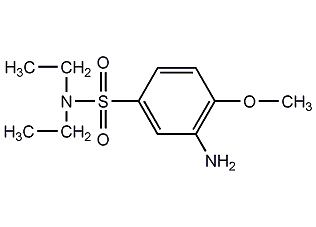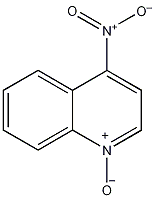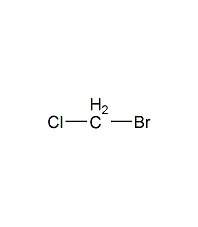
Structural formula
| Business number | 02C1 |
|---|---|
| Molecular formula | C11H18N2O3S |
| Molecular weight | 258.34 |
| label |
Azoic Diazo No. 42 |
Numbering system
CAS number:97-35-8
MDL number:MFCD00009045
EINECS number:202-575-5
RTECS number:None
BRN number:None
PubChem number:24852003
Physical property data
1. Properties: White uniform powder.
2. Density (g/mL, 20?): Undetermined
3. Relative vapor density (g/mL, air=1): Undetermined
4. Melting point (ºC): 102-105
5. Boiling point (ºC, normal pressure): Undetermined
6. Boiling point (ºC, kPa): Undetermined
7. Refractive index: Undetermined
8. Flash point (ºC): Undetermined
9. Specific rotation (º): Undetermined
p>
10. Autoignition point or ignition temperature (ºC): Not determined
11. Vapor pressure (mmHg, 20.2ºC): Not determined
12. Saturated vapor Pressure (kPa, ºC): Undetermined
13. Heat of combustion (KJ/mol): Undetermined
14. Critical temperature (ºC): Undetermined
15. Critical pressure (KPa): Undetermined
16. Log value of oil-water (octanol/water) distribution coefficient: Undetermined
17. Explosion upper limit (%, V/V): Undetermined
18. Lower explosion limit (%, V/V): Undetermined
19. Solubility: Insoluble in water, soluble in hydrochloric acid and sulfuric acid.
Toxicological data
None
Ecological data
None
Molecular structure data
1. Molar refractive index: 67.95
2. Molar volume (cm3/mol): 214.2
3. Isotonic specific volume (90.2K ): 556.4
4. Surface tension (dyne/cm): 45.4
5. Polarizability (10-24cm3): 26.93
Compute chemical data
1. Reference value for hydrophobic parameter calculation (XlogP): None
2. Number of hydrogen bond donors: 1
3. Number of hydrogen bond acceptors: 5
4. Number of rotatable chemical bonds: 5
5. Number of tautomers: none
6. Topological molecule polar surface area 81
7. Number of heavy atoms: 17
8. Surface charge: 0
9. Complexity: 322
10. Number of isotope atoms: 0
11. Determine the number of atomic stereocenters: 0
12. Uncertain number of atomic stereocenters: 0
13. Determine the number of chemical bond stereocenters: 0
14. Number of uncertain chemical bond stereocenters: 0
15. Number of covalent bond units: 1
Properties and stability
None
Storage method
None
Synthesis method
Using o-aminoanisole as raw material, it is first acylated with acetic anhydride, chlorosulfonated with chlorosulfonic acid, condensed with diethylamine, and then hydrolyzed with sodium hydroxide. Raw material consumption (kg/t) o-acetamidoanisole (100%) 425 diethylamine (100%) 180 chlorosulfonic acid 1800 caustic soda (50%) 170 hydrochloric acid (31%) 120
Purpose
It is mainly used for dyeing and printing cotton and viscose fabrics. It is the only light pink light-fast dye among ice dyes. It can replace soluble reduced pink IR (indigosol pink IR) and bright red base. It can also be used for printing and dyeing silk and nylon fabrics.
extended-reading:https://www.newtopchem.com/archives/category/products/page/119extended-reading:https://www.bdmaee.net/n-ethylmorpholine/extended-reading:https://www.morpholine.org/3-morpholinopropylamine/extended-reading:https://www.cyclohexylamine.net/dabco-ne210-amine-balance-catalyst-ne210/extended-reading:https://www.newtopchem.com/archives/687extended-reading:https://www.newtopchem.com/archives/category/products/page/155extended-reading:https://www.bdmaee.net/lupragen-n204/extended-reading:https://www.cyclohexylamine.net/dabco-dc1-delayed-catalyst-dabco-dc1/extended-reading:https://www.newtopchem.com/archives/748extended-reading:https://www.bdmaee.net/u-cat-2110-catalyst-cas110-97-4-sanyo-japan/



